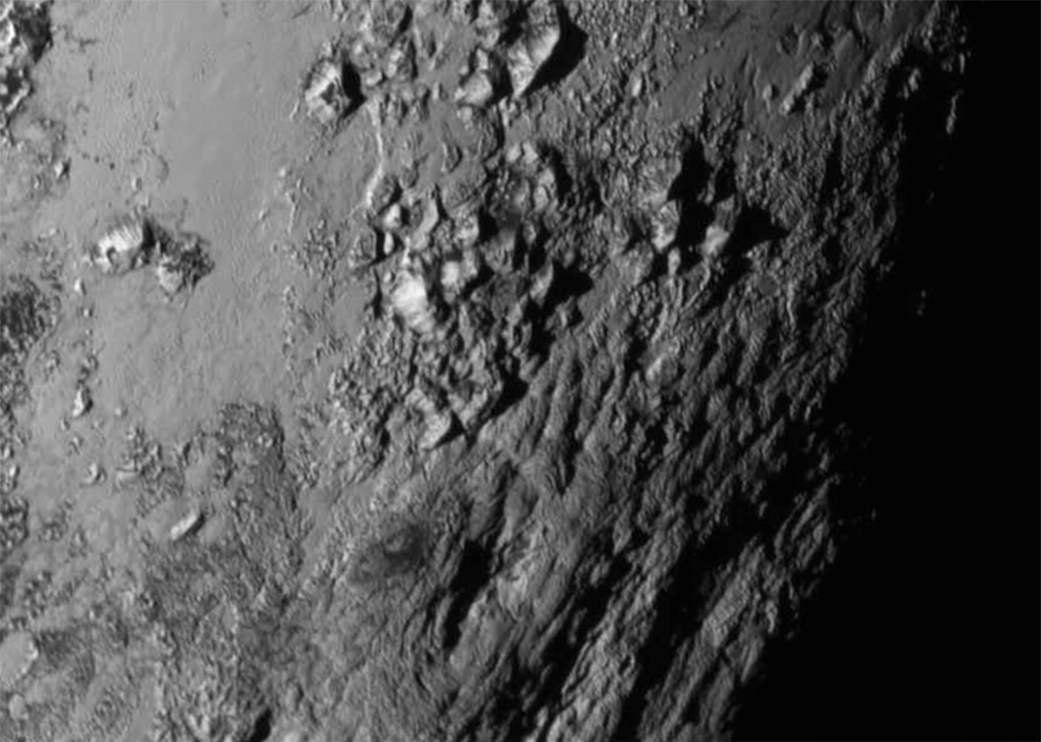Pluto does not meet the definition of a planet but as we
will see that does not diminish it. Far
from a random and uninteresting chunk of ice, with little local gravitational
influence on it’s neighborhood, it is an example of binary planetoids with tantalizing features.
UPDATE
Pluto indeed has a young geologically active surface. The images show us mountains that may still be in the process of formation, and a general lack of cratering compared to bodies, like our moon, which have low internal heat (relative to the heat of melting of their crust). Under the ice of Pluto the same heat that can drive mountain building can drive a biosphere of some sort. Thus there is one more place life could plausibly exist in the solar system. In the fullness of time it may turn out to be that life on the surface of an Earth like planet is the exception among life forms, not the rule.
Original article below:
What we may reasonably expect tomorrow is an experience much like seeing the moons of Jupiter up close for the first time. They surprised us by not being featureless cratered lumps of ice and rock. Instead we found volcanism on Io, and strong evidence of sub surface oceans on Europa and Ganymede. Only Callisto was the icy cratered dead world that was expected.
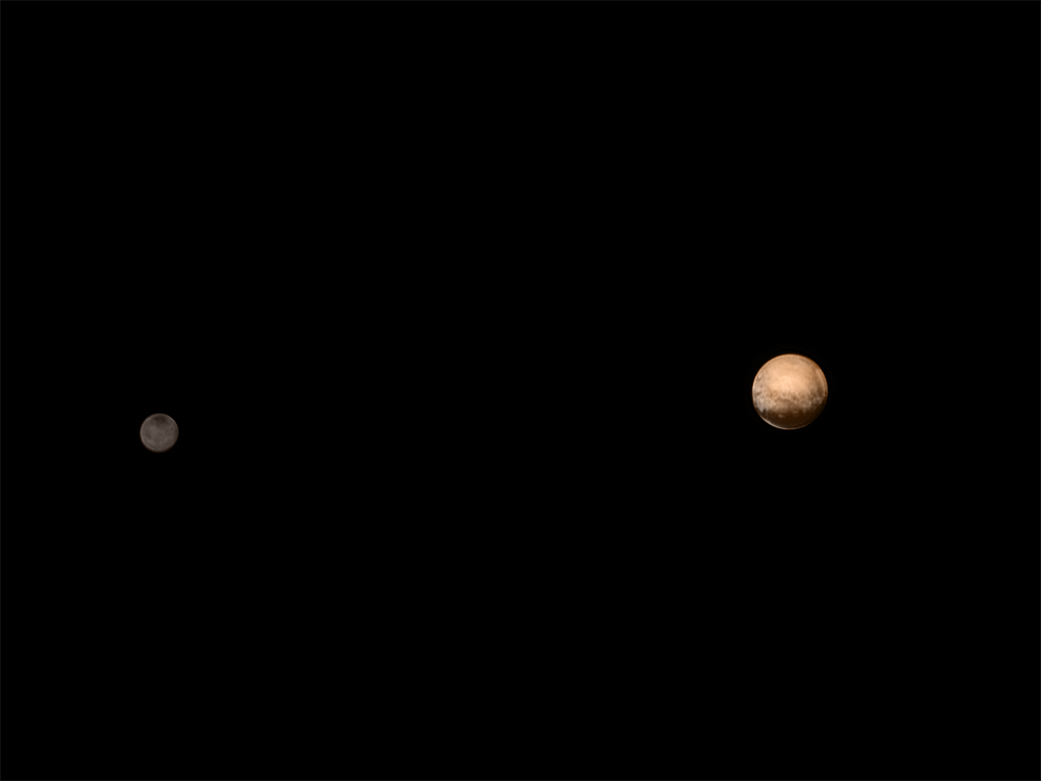
This is a true color image.
We are seeing in icy cold form, orbital
dynamics that we have seen at great distances in the form of binary stars, or
binary black holes. We are also seeing
some interesting differentiation between Pluto and Charon which illustrate that
far from being cold boring and featureless these icy worlds, much like the icy
worlds closer to the sun (the moons of Jupiter, and the massive asteroid Ceres)
may hid the greatest discoveries waiting to be made. Namely
geology at cold temperatures, and the limits of where life can and cannot exist.

This image has no color information. Notice the Polygonal shape, and the complex terrains of different colors and textures.
Consider the Moons of Jupiter.
Let us consider three of Jupiter’s moons to get an idea of the
range of what we could expect from Pluto.
Consider Europa, Ganymede and Callisto, the icy moos of Jupiter. On Earth where ever there is water, and some
source of energy, there is life taking advantage of it. Of particular interest are the life forms
that live near the mid ocean ridge by hot vents in the Atlantic. Similar life forms have been found living
near so called “cold pools” deep in the gulf of Mexico. These are places where bacteria have evolved
which can live off the stored chemical energy released by the Earths’ internal
processes. In one case these life forms
live in and near water that is superheated, in the other in water which is
super chilled. ("Life at Vents&Seeps" Woods Hole Oceanographic Institution). Many scientist consider these types of life as possible in a sub surface ocean such as those which can exist on icy bodies such as the following.
Europa
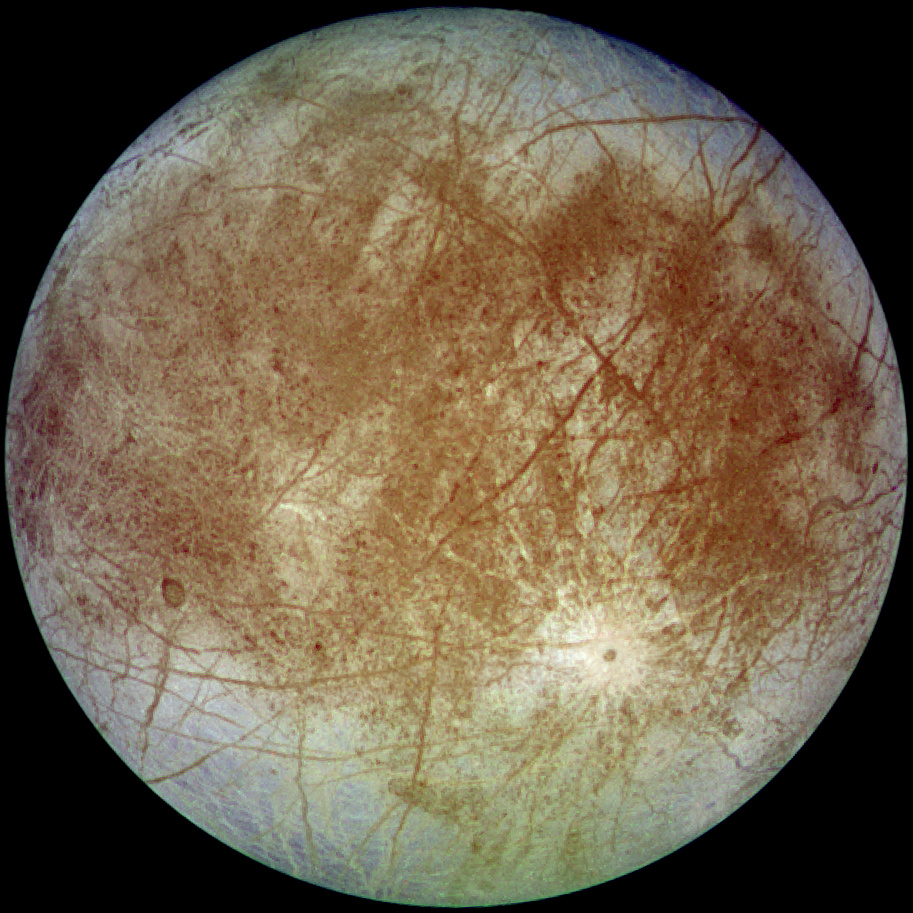
Europa is said to be one of the most likely places that we
will find life outside of the Earth in this solar system because it is
generally accepted that it has a sub surface ocean. Europa is too far from the Sun to be heated
by it. Instead it is heated by tidal
forces from Jupiter and the other moons of Jupiter. These gravitational forces heat the interior
and drive volcanism which drives heating a sub surface ocean, and cracking
of the thick icy shell above.
Ganymede
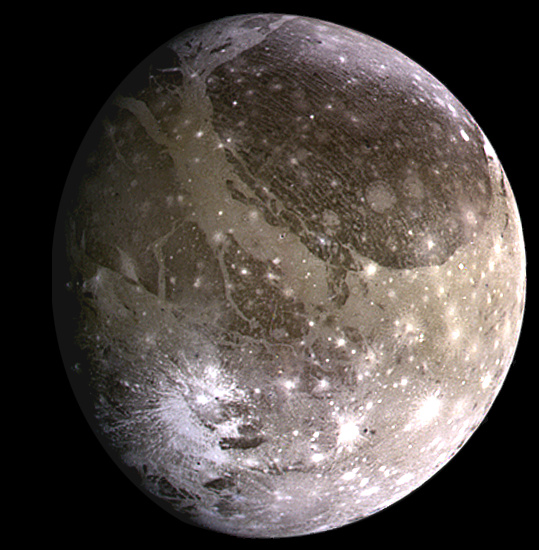
Ganymede is like Europa in having a cracked icy surface. This surface differentiation strongly suggest a level of internal heat
which could provide for a sub surface ocean. However it is not as active as Europa which shows little or no cratering.
Callisto
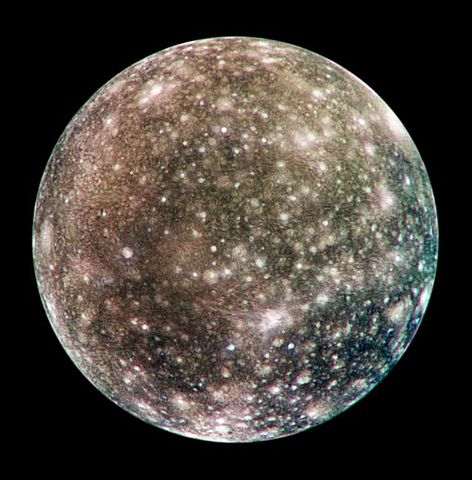
Shows no signs of sub surface oceanic activity. Callisto is for all intents and purposes a
cold icy boring rock shaped only by the occasional asteroid or comet
impact. There is very little chance of
life under that ice.
The bottom line:
Looking at the images of the Pluto-Charon system taken from
millions of kilometers away, in terms of color Pluto more resembles Europa than
Callisto. While Charon more resembles a
small Callisto than a Europa or Ganymede.
With Pluto and Charon orbiting a common center of mass, very slowly
spiraling inwards, and several smaller moons also orbiting that center of mass
providing gravitational tugs Pluto may surprise us. What we will learn from New Horizons investigation
of Pluto and other Kuiper belt planetoids is just how extreme the circumstances
for life can be. Either it will show no
signs of any interesting sub surface activity that would indicate a liquid
water layer that could support life, or it will set the limit on where we may
find liquid water.
At most I see we could find a Pluto about as active as Ganymede, but colored a bit like Europa.
Either way, this fly by will be the most profound experience
in planetary probe science since the exploration of Saturn’s Moon Titan. Due to the speed at which the engines we are
willing to put into space can achieve, it will be a LONG time before we
have this chance at Pluto again.
UPDATE: It has to be said this blog is hardly the first to consider the chance of a sub surface ocean on Pluto. There has even been peer reviewed published work modeling Pluto suggesting that there should be such an ocean.
All images courtesy of NASA.
